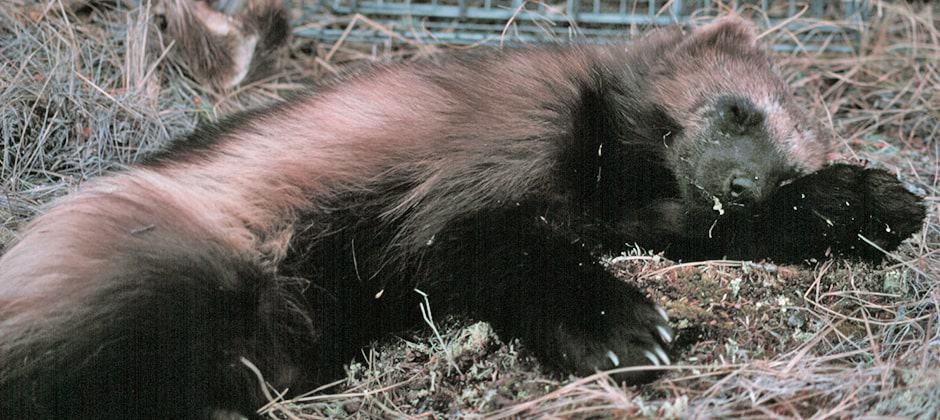Share this article
JWM: Are southwest Canada wolverines being overharvested?
Trappers may be harvesting wolverines at unsustainable levels in the south of their range in the Canadian Rockies, according to new research.
Maintaining population numbers in this area can be tricky, said TWS member Garth Mowat, a large carnivore specialist at British Columbia’s Ministry of Forests, Lands, Natural Resource Operations & Rural Development. If wolverines are overharvested in one area, wolverines elsewhere may be blocked by the Trans-Canada Highway from moving in and helping the population. Geographical features, including the Alberta prairies and the Rocky Mountain Trench stretching across the western side of the Northern Rockies may also block their movement.
Mowat, the lead author of the study published in the Journal of Wildlife Management, and his colleagues took advantage of data gathered from a number of different wolverine (Gulo gulo) tracking projects, including one that recently examined connectivity in the Banff, Kootenay and Yoho National Park areas in Alberta and British Columbia.
The latter study found that wolverines in these areas had less connectivity, particularly females, which tend to disperse a lot less than males. They found that the Trans-Canada Highway, a major road that stretches from Calgary to Vancouver, provides a barrier to wolverine dispersal, though some evidence shows that the animals may be making use of wildlife crossings built at different points along that road.
Mowat and his co-authors collected scat samples and DNA taken from hair snares in a 21,235-square-mile area south of Banff and Yoho, covering areas of southeastern B.C. and southwestern Alberta, from 2012 to 2016 in order to estimate the wolverine population numbers in the area.
Using these hair snares is “much easier than trapping a wolverine and putting a collar on it,” Mowat said.
They compared these numbers with harvest numbers reported by trappers and found that trappers were harvesting about 8% of the total estimated wolverine population in this area — a number higher than the wildlife managers expected.
The number is also higher than Mowat believes is sustainable. “Wolverines have extremely low reproduction for their size,” he said, adding that lack of connectivity with wolverines in other parts of the country or in the U.S. also has an effect on recruitment to this area. Harvesting under 4% of the population would be more sustainable, he said.
Stressing that trappers were instrumental in gathering some of the data for this research, Mowat doesn’t believe an outright ban is the way forward. Another recent study conducted in another population of wolverines in the north of Alberta found wolverines in a lesser known area largely through the help of local trapper knowledge, and Mowat believes that the best way to deal with this overharvest is by asking trappers to voluntarily reduce their targeted take.
Wolverines are so scarce in the area that only about 20 animals are trapped each year, he said, including some taken incidentally by trappers targeting other animals. Working with trappers to stop targeting wolverines altogether would be the ideal way to bring the harvest to a sustainable level, he believes.
“I think that’s the best for everybody,” Mowat said. If trapping regulations are changed officially, trappers won’t be able to sell pelts from wolverines caught incidentally, he said, but if the harvest level doesn’t drop, the provincial government may be forced to take stronger action.
This article features research that was published in a TWS peer-reviewed journal. Individual online access to all TWS journal articles is a benefit of membership. Join TWS now to read the latest in wildlife research.
Header Image: A live-trapped and sedated wolverine. ©Yukon Territorial Government








